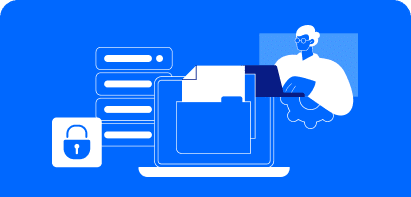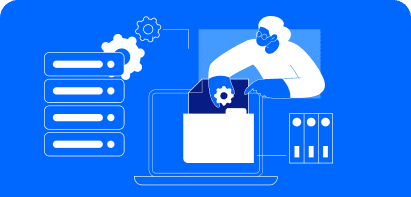We are all feeling the impact of the cyber professional shortage.
According to Cyberseek’s cyber jobs heatmap, the supply/demand ratio for cyber jobs in the US only enables filling 66% of the open positions. Of those, cybersecurity analyst is the job title in highest demand—in other words, SOC analysts are a hard-to-come-by commodity. If you want to hire a security analyst or keep the one you already have, it’s vital to understand what makes them tick so you can find ways to attract and keep them.
In recent years, threat actors have begun taking advantage of emerging digital transformation initiatives, adding new layers of complexity to the growing threat landscape. Consequently, the scope of the SOC analyst’s job has expanded, and the analyst’s role has become even more important to ensure that organizations stay safe. Analysts are feeling the burden of this added responsibility and the deficit of cyber professionals only accentuates it.
Identifying Barriers to SOC Analysts’ Productivity
Tines’ latest survey aimed to get a full understanding of SOC analysts’ day-to-day, including daily tasks, challenges, and factors that contribute to their job satisfaction. Alarmingly, 64% of the analysts surveyed declare that they are likely to switch jobs next year, and 71% diagnose themselves as suffering some level of burnout.
Additional key findings include:

It seems that the biggest challenge that security analysts are facing has to do with being operationally efficient. Finding ways to optimize security analysts’ operations could very well mean the difference between keeping your analyst for years to come or scrambling to find a replacement.
How to Alleviate SOC Analysts’ Pain Points
The biggest obstacles facing security analysts aren’t difficult to overcome when you can provide them with the right tools. For example, a Continous Threat Exposure Management (CTEM) implementation platform can enable security analysts to optimize security operations. Here’s how:
1. Automate
A. Optimize automation capabilities
As analysts report suffering from manually performing time-consuming tasks, the Cymulate Exposure Management Solution and Security Control Validation platform enables them to automate scheduled, out-of-the-box assessments and promote continuous improvement. With these automated assessments, analysts can exercise and fine-tune threat detection and incident response playbooks. Additionally, they can validate SIEM tool detection and quickly discover gaps to accelerate mitigation.
B. Save time with automated reporting
According to Tines, over 50% of an analyst’s time is devoted to reporting, which includes anything from capturing notes and metrics to analyzing team performance or demonstrating value to leadership. the Cymulate Exposure Management and Security Validation platform’s dynamic customizable dashboards automatically analyze all data collected from assessments so that analysts don’t spend their time manually compiling the data and then analyzing it. Additionally, following each assessment, a report with easy-to-digest remediation guidance is generated, so analysts know where they need to focus their efforts.
2. Simplify
A. Maximize security tool integrations
An efficient way to cut down on manual work is to simplify your processes and utilize the Cymulate Exposure Management and Security Validation platform’s security tool integrations.
- SIEM integration – Run assessments to validate whether the SIEM is accurately and fully detecting the relevant threats and properly alerting. Indicators of behavior and off-the-shelf Sigma rules that appear directly in the Cymulate platform eliminate the need to build new rules or fine-tune existing ones.
- EDR/XDR integration – Verify that response tools will work as expected.
- SOAR and GRC integration – Import Cymulate’s continuous security validation results, risk scores, and actionable remediation guidance directly into your SOAR and GRC to view simulation results, create customized dashboards, and utilize assessment data.
- Ticketing integration – Functions such as ServiceNow directly integrate with the Cymulate analytics dashboard to streamline the mitigation process.
B. Reduce the need for coding
To cut back on the need for coding, the Cymulate Exposure Management and Security Validation platform:
- Provides out-of-the-box templates for assessments and automates security testing
- Updates prepackaged threat intelligence-led assessments daily
- Operationalizes the MITRE ATT&CK® Framework to easily create meaningful and life-like attack scenarios
3. Prioritize
The Cymulate Exposure Management and Security Validation platform’s vulnerability management solution integration continuously provides SOC teams with the visibility and context they need to create an action plan based on prioritization for risk reduction. Based on simulated and emulated attacks, it complements severity with exploitability and accounts for the effectiveness of compensating security controls in an environment. This integration enables SOC analysts to know exactly where they need to focus their efforts to make the most impact.
Understanding how threat indicators vary in complexity and the effort required to address them can help SOC teams focus on the most impactful tasks. The Pyramid of Pain is a useful model that categorizes threat indicators by their difficulty to detect and respond to, ranging from easily addressable hashes to more challenging TTPs (Tactics, Techniques, and Procedures). By operationalizing these insights within a CTEM platform, SOC analysts can better prioritize efforts where they will yield the greatest risk reduction.
4. Increase Productivity
CTEM implementation platforms can help increase productivity by providing a framework to improve analysts’ adversarial skills. The Cymulate Exposure Management and Security Validation platform’s Purple Teaming provides SOC analysts with an open attack framework to craft and automate purple team exercises that leverage and scale adversarial expertise. The capability enables security professionals of any level to create, store, modify, and execute both simple and sophisticated assessments using custom-built or out-of-the-box templates. Analysts can practice purple teaming to accomplish more with their time and limited adversarial skillset. A bonus of this framework is that it encourages professional development because security analysts can improve adversarial skills on the job and become better defenders.
The Result: Increased Job Satisfaction
If you can adopt a CTEM implementation platform and implement the above suggestions, your security analysts will begin to feel a decrease in their workload and a reduced amount of stress.
Automating assessments and reporting will allow them more time to focus on other more meaningful tasks, maximizing their sense of purpose and pride in their work. Additionally, a platform that focuses and prioritizes remediation efforts enables security analysts to invest time in areas that will have the most impact on risk levels, increasing their feelings of achievement. Chances are that security analysts who have a tool that can show a direct correlation between remediation efforts and reduced risk will increase their job satisfaction and decrease burnout.
Moreover, investing in a platform that encourages professional development shows your security analysts that you value them and their skills, which can increase their overall job satisfaction.
———-
Discover how Cymulate’s Exposure Management and Security Validation platform can boost your SOC analysts’ efficiency while easing stress. Book a demo today!











